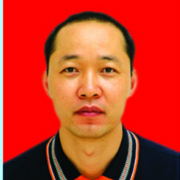-
- 殷国前主任医师
-
医院:
广西医科大学第一附属医院
科室:
整形美容外科
- Investigation on the microcirculation effect of local application of natural hirudin on porcine random skin flap venous congestion
- 作者:殷国前|发布时间:2012-11-13|浏览量:766次
Random skin flap is the common flap for repairing wound, reconstructing the function, improving skin appearance. After the flaps are raised up, the micro-circulation will inevitably have a series of changes of pathophysiology. The tissue shows ischemia and hypoxia, and a large number of free radicals and various metabolites will damage the tissue and cells. Then, the inflammatory response and lipid peroxidation occurs, can severely lead to flap necrosis. Flap congestion is one of the common causes that lead to skin flap necrosis. There are extensive researches to improve the blood circulation of the flap [1-3], but there is no good recognized method to improve flap survival. Application of topical and external used drugs can improve blood circulation and has the advantage of high local drug concentration, application convenience and less side effects for the whole body, etc, but the research in this area has rarely been reported.广西医科大学附属第一医院整形美容外科殷国前
Bloodsucking leech therapy is mainly through the active ingredients of anticoagulation from the salivary glands of leeches. The blood circulation in the affected area will be significantly improved after taking them. Therefore, the flap survival could be improved. Conforti et al [4] believed that the blood-sucking leeches as live could eliminate hemorrhage and increase blood flow immediately. This therapy has become the standard treatment to venous stasis complications. However, applications of live leeches are often subject to limitation of the geographical, climatic, patient mood, and complications [5-7] so that the present study can not be widely applied [8]. The natural hirudin are extracted from living manillensis by KeKang Biotechnology Co., Ltd in Guang Xi Province, China and obtained national patent. This provides a pre-condition that we use the natural hirudin injection therapy instead of blood-sucking leeches to solve the congestion problem after free flap transplantation. Therefore, we designed the pig random pattern flap of congestion in order to understand the effect on skin flap survival by using locally the natural hirudin.
1. Materials and Methods
1.1 Experimental materials. 3 Bama small pigs from GuangXi (provided by Bama small pig breeding center, faculty of Agriculture, Guangxi University), weight 10-15Kg, male or female; natural hirudin freeze-dried powder (provided by KeKang Biotechnology Co., Ltd in Guang Xi Province, China, batch number 20070221), concentrations were 20ATU / bottles and 40ATU / bottle; MPO enzymatic kit, MDA enzymatic kit, SOD enzymatic kit (provided by ADL Company in U.S.).
1.2 Animal feeding and anesthesia The pigs were separately fed in cage, fed three times a day by the real estate piglets feed, 200g / times / pig, free access to water, 24h fasting and 6h no water before operation. Ketamine hydrochloride combined with midazolam was taken for intravenous anesthesia in the surgery. Ketamine hydrochloride was taken local intramuscular injection after operation.
1.3 Experimental groups and preparation of congestion flap model. The random skin flaps were designed in the pig back on both sides and six flaps were designed per pig [4, 9]. 18 flaps were prepared totally and these flaps were divided into three group: A group (control group), B group (low concentration of the drug group) and C group (high concentration of drug group).There were 6 flaps in each group. Flap position and aspect ratio design: flaps were located 3cm beside the spine, flap length 14cm, width 4cm, and 3 flaps were designed each side, flap distance 3cm. In the preparation of flaps, the skin was cut along the line of flap design, and the subcutaneous tissue was separated to the fascia, then to the pedicle of the flap under the fascia. The bleeding was fully stopped after setting off the flaps (Figure 1). Then, the thread 1 was used for original suture. The shaft-shaped vessel from abdominal white line was cut for ligation in the surgery to ensure the free flap [10]. An appropriate pressure dressing with homemade athletic supporter was used after operation.
Figure 1
1.4 Methods of hirudin local injection. The injection sites in each flap were the distal 2/3 part of the flap and had 10 points into subcutaneous level. A group was injected with 3ml normal saline. B group was injected 20ATU natural hirudin (dissolved in 3ml normal saline in advance). C group was injected 40ATU natural hirudin (dissolved in 3ml normal saline in advance). Injection was respectively given at immediate time, day 1, day 2 and day 3 after operation.
2. Indicators and methods of detection
2.1 generally observation. Flap congestion changes were observed by eyes at day 0, day 1, day 2 and day 3 after operation and the length of the flap remote congestion was measured.
2.2 MDA, MPO and SOD determination in the flaps. The full thickness flaps at the distal 1cm were cut about 300 mg tissues at the middle of surgery, 4h, 1 day, 3 days and 8 days after operation. The tissue was quickly marked and preserved in the refrigerator at -20 ℃ until the sample is complete. The samples were weighed, added saline solution, and fully grounded into homogenate. The homogenate was centrifuged at low-speed 500 r / min and the supernatant of each tissue specimens was distributed into three portions, which were respectively tested the concentration of the three indicators according to the kit instructions.
2.3 Determination of flap survival rate. The flap survival area and total area were described with sulfuric acid paper after 12 days of post operation. The flap survival rate was calculated with the weight of weighing paper on behalf of the area of flap [11].
The flap survival rate = flap survival area / total area × 100%
3 Statistical analyses
all the indicators were expressed by mean ± standard deviation (X ± s). The flap survival rate and the measured values of MDA, MPO and SOD in the three groups were analyzed statistically with the statistical software SPSS13.0. Multiple sets of measurement data was analyzed by the analysis of variance. P <0.05 shows the difference was statistically significant, P> 0.05 shows the difference was not statistically significant.
4 Results
4.1 General observation. The appearance of the flaps in three groups was no difference at the instant after operation. All had the mild congestion at the scope of distal 2 / 3 of the flaps. The length of flap congestion in three groups was no significant difference (P > 0.1). At the first day after operation, the flap congestion began to show clear, light and dark red. The limit with the flap proximal was clear. The three groups of animals began to show differences in the flap appearance. The length of flap congestion in A group was much longer than that in B and C group (P <0. 05). The length of flap congestion in C group was longer than that in B group (P> 0.05). At the 10 days after operation, the distal flap began to show necrosis, black color, hard, no hair growth and no capillary reaction. The proximal necrosis flap had about 1-3cm transition region, in which the congestion had not fully dissipated and showed dark red color, a small amount of hair growth, and there was capillary reaction. A, C group flap necrosis was significantly longer than the length of B group (P <0. 05), A group of flap necrosis length was longer than C group congestion (P> 0.05). The length of necrosis flap in A and c groups was much longer than that in C group (P>0.05).
Table 1: The measurement (cm) of flap distal congestion length
at different time in each group
Group Instantl after operation 1d after operation 10d after operation |
Group A 9.43±0.37 9.68±0.43 7.61±0.80 Group B 8.64±0.61 6.81±0.53 3.89±0.53 Group C 9.08±0.26 8.51±0.64 5.84±0.52 |
4.2 MDA, MPO and SOD content in the flaps. The contents of these indicators between the group A and group B or group C were significantly different (P <0.05). The contents between group B and group C were no significantly different between significance (P> 0.05). (See Table 2, 3, 4.)
Table 2: The measurement of MPO contents after the formation of random flap (U / mg)
|
Group Instantl after operation 4h after operation 1d after operation 3d after operation 8d after operation |
Group A 78.43±8.46 158.50±12.5 266.83±17.4 178.78±12.6 155.83±19.4 Group B 75.88±6.87 123.39±12.1 * 214.94±11.5 * 129.44±17.0 * 114.72±15.3 # Group C 76.25±7.16 133.94±8.15 # 236.94±9.53 * 149.89±9.32 118.44±10.7 |
The group B and group C compared with the group A * P<0.01 , # P<0.05
术后淤血皮瓣中MPO浓度变化
Table 3: The measurement of SOD contents after the formation of random flap (U / mg prot)
|
Group Instantl after operation 4h after operation 1d after operation 3d after operation 8d after operation |
Group A 48.28±14.0 38.24±12.8 11.14±3.54 20.96±3.37 27.81±4.12 Group B 50.81±11.3 46.60±11.3 # 20.88±3.66 * 28.41±5.52 # 33.21±5.07 Group C 51.58±12.8 42.99±13.6 14.46±1.86 * 22.39±3.98 29.89±4.70 |
The group B and group C compared with the group A * P<0.01 , # P<0.05
术后淤血皮瓣中SOD浓度变化
Table 4: The measurement of MDA contents after the formation of random flap (U / mg prot)
|
Group Instantl after operation 4h after operation 1d after operation 3d after operation 8d after operation |
Group A 4.13±0.41 17.34±1.67 27.36±1.25 24.90±1.87 22.40±1.78 Group B 4.09±0.46 14.30±1.28 * 21.18±1.42 * 18.84±1.65 15.95±1.81 Group C 4.44±0.45 15.79±1.13 # 23.81±1.70 # 22.04±1.78 19.79±2.02 |
The group B and group C compared with the group A * P<0.01 , # P<0.05
术后淤血皮瓣中MDA浓度变化
We analyzed the test results and found that MDA and MPO concentrations in the flaps of each group were shown the rising trend in the day after operation, while the concentrations of the SOD were shown the decreasing trend. After 1 days of post operation, MDA and MPO concentrations in the flaps of each group were gradually decreasing, while the concentrations of the SOD were gradually rising. This indicated that in the flap ischemia and reperfusion after operation, the inflammatory reaction was clear, and the neutrophils were increased. The free radical production was gradually increased so that the MDA and MPO levels were increased. The free radicals could damage SOD so that they decreased the SOD concentration. The inactivation of SOD can not effectively eliminate free radicals, so MDA content increased further. The inactivated SOD could not effectively eliminate the free radicals, so the MDA content increased further. After 3 days of post operation, MDA and MPO concentrations in the flaps of each group were gradually decreasing, while the concentrations of the SOD were gradually rising. This showed that after three days, the inflammatory response was not clear in the flap congestion. The level of neutrophils and free radicals had reduced and SOD played the role of protection.
The difference among each group was analyzed. MDA and MPO levels in B group and C group at each time point were lower than that in group A, while SOD levels were higher than that in group A (P <0.05). MDA and MPO levels in B group at each time point were lower than that in group C, while SOD levels in B group were higher than that in group C (P>0.05). These shows the SOD activity in the localized tissue was increased to a certain extent after the natural hirudin was injected locally in the group B and group C so that it inhibited the increase of MDA and MPO. The results showed statistically significant. MPO activity in group C was increased much less than that in the group B, but the results in the two groups were no significant difference.
4.3 Determination of flap survival rate. After 12 days of post operation, the flap survival rate in group A was (45 ± 7)%, the flap survival rate in group B (67 ± 4)%, the flap survival rate in group C (52 ± 4)%. The flap survival rate in group B and group C was higher than that in group A (P <0.05), the flap survival rate in group B was higher than that in group C (P> 0.05). (Figure 4) .
|
TA的其他文章: |




